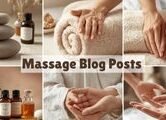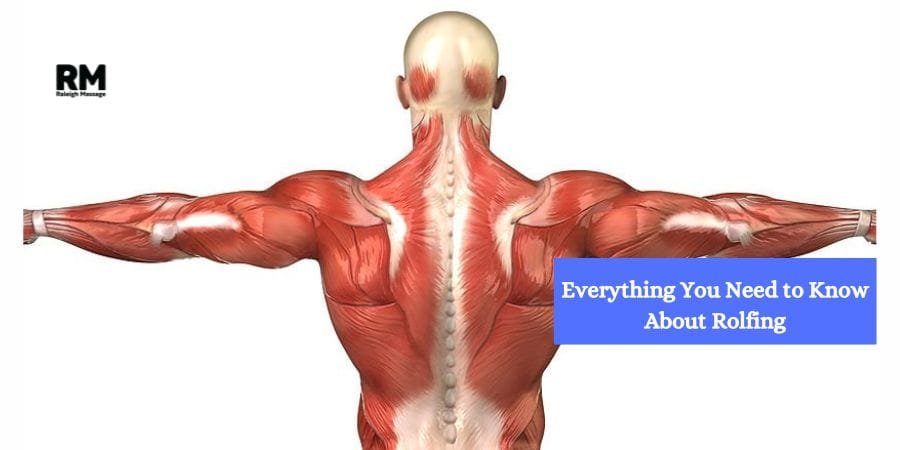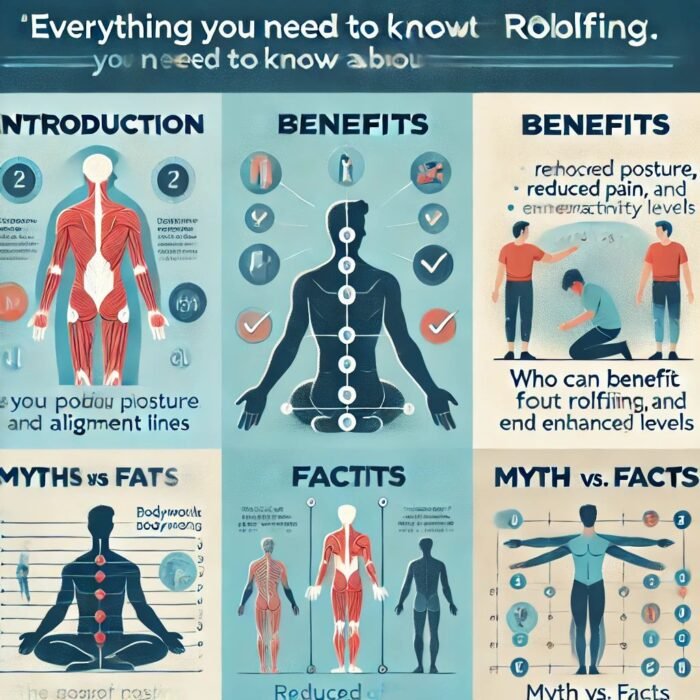I had first heard of Rolfing and, well, it sounded pretty esoteric; many people were talking about how it had transformed their bodies. So, I dived in and learned all I could about this modality. If you have ever been curious, this guide will answer your questions. Let’s break down the explanation so that it is easy to understand.
What Is Rolfing?
Rolfing is a type of bodywork that focuses on improving posture and movement. It’s named after Dr. Ida Rolf, who developed this technique. The main idea is to align your body by working on your fascia—the connective tissue that surrounds your muscles. Over time, injuries, stress, or bad habits can cause this tissue to tighten or become misaligned.
When your body isn’t aligned, you might feel stiffness, pain, or limited mobility. Rolfing works to release these restrictions so you can move freely. Think of it like resetting your body’s natural balance.
How Does It Work?
During a Rolfing session, a certified Rolfer uses their hands to apply pressure to specified areas of your body. This isn’t the same as a relaxing massage. It’s more focused and can sometimes feel intense. But it’s not painful-at least, not in a bad way. You’ll feel like your body is being stretched and opened.
Typically, this is achieved in ten sessions, with a relatively specific goal in each session. The Rolfer begins at the surface and moves inward. You should leave with your body feeling lighter, more pliable, and aligned.
Benefits of Rolfing
I’ve literally heard so many people share their stories about how Rolfing helped them. Here are some of the common benefits:
- Improved Posture: You may observe that you stand more tall and your body is more balanced.
- Pain Relief: Rolfing helps in chronic pains, especially at the back, neck, and shoulder regions.
- Better Mobility: This is because the joints and muscles are well relaxed, hence making it easier for you to move around.
- Stress Reduction: Releasing tension in your body will also calm your mind.
- Injury Recovery: Rolfing treats the body for the prevention and healing of injuries.
Personally, I felt that my shoulders were not that stiff anymore, and the lower back pain loosened after some sessions.
Is Rolfing Right for You?
If you feel pain, stiffness, or your posture isn’t really good, then maybe Rolfing is the best thing to do about your life. And if you have injuries, or maybe if you just want your body to feel good, then Rolfing can do it for you. Even athletes use Rolfing for better performance.
But remember, this is not for everybody. If you have serious health problems, you will have to consult with your doctor first. Rolfing is another holistic approach; however, it is not designed to take the place of medical care.
What to Expect During a Session
The first session may involve a more open-ended initial discussion. To understand your relevant health history or any goals the Rolfer hopes to aid you in resolving, they simply will ask appropriate questions. Sometimes, you must stand, move around, even walk, depending on the clinic’s requirements that the Rolfer should observe their posture and typical movement patterns you may have exhibited.
You will lie on the table during your session and allow the Rolfer to work into your areas. They will press with their hands to stretch tissues and release tension. Some places might be tender, but it is a good pain; like your body lets go of something it had held in.
The session takes about an hour. After that, you will feel a little sore but usually, this soreness subsides within hours. You’ll start noticing the change in how you move and feel.
My Experience With Rolfing
When I tried Rolfing, I wasn’t sure what to expect. The first session felt strange but in a good way. I could feel the Rolfer working on areas I didn’t even realize were tight. After a few sessions, I noticed I was standing straighter without even trying. My body felt lighter, and my lower back pain wasn’t as bad. It’s not a magic fix, but it definitely made a difference for me.
For more information about Rolfing or to book a session, check out Massage. They can help you get started on your journey to feeling better.
FAQs About Rolfing
1. Does Rolfing hurt?
Rolfing isn’t hurting, yet sometimes it hurts, sort of. Sometimes some of those places feel sensitive as the Rolfer is working on them. Most people describe it as a “good pain” of tension release. If anything hurts too much, just let your Rolfer know.
2. How many sessions would I have to make?
The standard Rolfing program is ten sessions. Each session focuses on a different part of your body. However, some people might feel the benefits after just a few sessions, while others may need additional work depending on their goals.
3. Is Rolfing safe for everyone?
Generally, Rolfing is safe, though it is contraindicated in some cases, for example, when there are severe osteoporosis or acute injuries. Always consult your doctor before getting started.
4. How is Rolfing different than massage?
Rolfing and massage are both hands-on work, yet they are dissimilar. Massage is all about relaxation and relieving muscle tension. Rolfing is more about the realignment of your body structure by working on fascia. It is more about the long-term rather than immediate relief.
5. Can I practice Rolfing along with other therapies?
Yes, many people combine Rolfing with other treatments such as physical therapy, yoga, or chiropractic care. It can complement these therapies by improving your posture and movement patterns.









